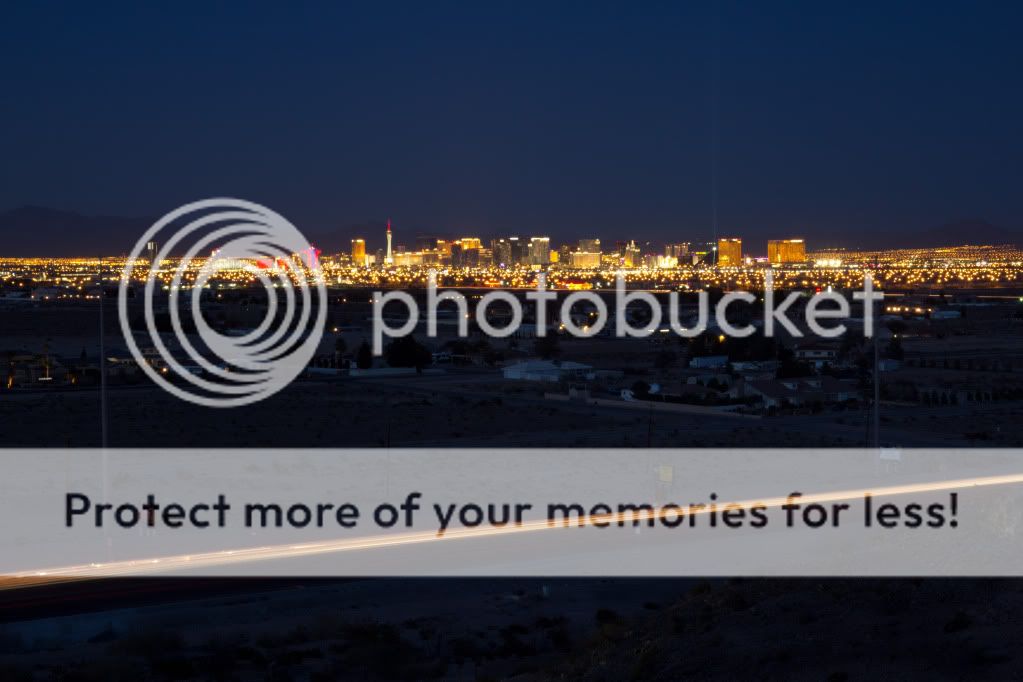VegasPhotoNut
TPF Noob!
- Joined
- Jun 20, 2011
- Messages
- 67
- Reaction score
- 3
- Location
- Las Vegas
- Can others edit my Photos
- Photos OK to edit
Hey Just picked up a new lens (sigma 17-50 f/2.8) and was out doing some test shots from a local hill. shooting towards the city at night i really wasnt able to get the city very sharp. Im curious is it because i was simply just so far away that the camera cannot create a sharp image at that particular focal point? Id say i was a good 7-10 miles away. this is just one of many and i didnt edit them at all just straight from LR.

shot at f/22 49sec

shot at f/22 49sec












